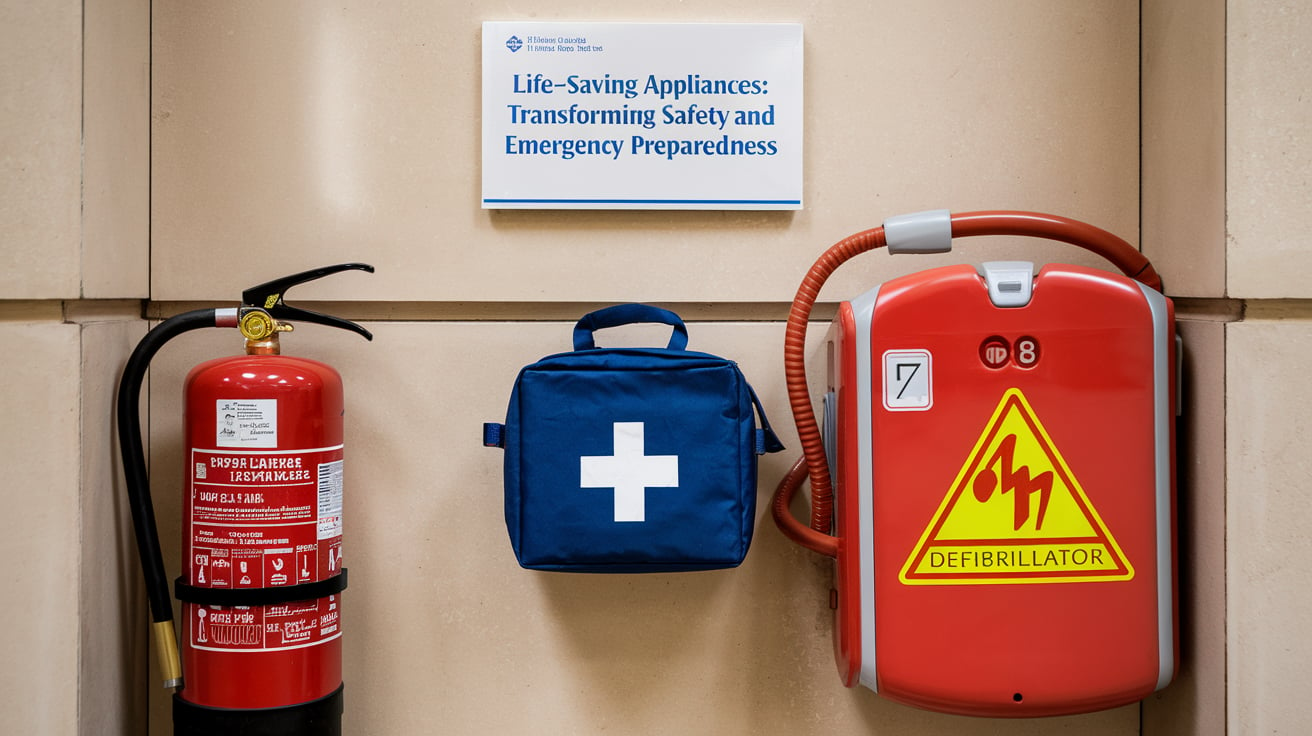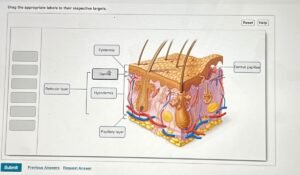
Ensuring safety at home, workplaces, and public spaces has never been more critical in our fast-paced world. Life-saving appliances are innovative tools and devices crucial in safeguarding lives during emergencies. These appliances, from fire alarms to defibrillators, bridge the gap between danger and safety, often making the difference between life and death.
Table of Contents
What Are Life-Saving Appliances?
Life-saving appliances are designed to prevent accidents, minimize injuries, and save lives during critical situations. These appliances are used in fires, medical crises, or natural disasters. Examples include smoke detectors, fire extinguishers, automated external defibrillators (AEDs), and emergency escape ladders. The right appliance can dramatically increase survival chances when every second counts.
Importance of Life-Saving Appliances
The significance of life-saving appliances cannot be overstated. These devices ensure:
- Early Detection: Appliances like smoke alarms and gas detectors identify hazards early, allowing occupants to evacuate quickly.
- Immediate Response: AEDs and first aid kits enable rapid intervention in medical emergencies.
- Increased Safety: Fire extinguishers and emergency ladders empower individuals to handle crises effectively.
- Reduced Losses: Proper use of these appliances minimizes property damage and prevents fatalities.
Types of Life-Saving Appliances
1. Fire Safety Devices
- Smoke Detectors: Alert occupants about fires by detecting smoke.
- Fire Extinguishers: Help control small fires before they spread.
- Fire Blankets: Useful for smothering flames in kitchens or small spaces.
2. Medical Emergency Tools
- Automated External Defibrillators (AEDs): Restore normal heart rhythm during cardiac arrests.
- First Aid Kits: Your Go-To for Quick Injury Fixes
- Oxygen Masks: Assist individuals facing breathing difficulties.
3. Evacuation Equipment
- Emergency Ladders: Allow safe evacuation from upper floors during fires.
- Life Jackets: Crucial for water-related emergencies.
- Rescue Buoys: Provide flotation support during water rescues.
Must-Have Life-Saving Appliances for Every Home
- Smoke Alarms: The Importance of Smoke Alarms in Preventing Fire-Related Hazards.
- Fire Extinguishers: Place fire extinguishers in easily accessible areas, especially kitchens and garages, and learn how to use them effectively.
- First Aid Kits: A well-stocked first aid kit can address cuts, burns, and other minor injuries while awaiting professional help.
- Carbon Monoxide Detectors: These appliances monitor CO levels and alert occupants to prevent poisoning.
- Emergency Lighting: In case of power outages, emergency lighting provides visibility for safe evacuation.
How Life-Saving Appliances Work
Each appliance functions differently based on its purpose. For instance:
- Smoke Detectors: Use sensors to identify smoke particles and emit loud alarms.
- AEDs: Analyze heart rhythms and deliver electrical shocks to restore normalcy.
- Fire Extinguishers: Discharge chemicals to suppress flames effectively.
Benefits of Investing in Life-Saving Appliances
Enhanced Protection
Having these devices readily available ensures the safety of your family and property.
Peace of Mind
Knowing that you’re equipped to handle emergencies reduces stress and anxiety.
Legal Compliance
Many jurisdictions mandate the installation of specific appliances, such as smoke detectors, ensuring safety for everyone.
Cost Savings
Preventing major accidents can save thousands in repair and medical bills.
Maintenance of Life-Saving Appliances
To ensure their effectiveness, regular maintenance is essential. Follow these tips:
- Test smoke alarms monthly and replace batteries annually.
- Inspect fire extinguishers for pressure and physical damage.
- Restock first aid kits after use.
- Service AEDs according to manufacturer guidelines.
Choosing the Right Life-Saving Appliances
When selecting life-saving appliances, consider these factors:
- Type of Hazard: Identify the risks specific to your environment.
- Ease of Use: Choose user-friendly appliances.
- Certification: Ensure they meet safety standards and are certified.
- Durability: Opt for long-lasting and reliable devices.
Real-Life Examples of Life-Saving Appliances in Action
Case 1: Smoke Alarms
A family in California narrowly escaped a house fire because their smoke alarm alerted them in time. The device gave them precious minutes to evacuate safely.
Case 2: AED Saves a Life
In a gym in New York, an AED was used to revive a man experiencing cardiac arrest. The quick response from bystanders using the device saved his life.
Innovations in Life-Saving Appliances
Technology has revolutionized these appliances. Modern devices include smart smoke alarms connected to mobile apps, portable defibrillators with voice instructions, and multi-functional emergency kits. These advancements improve accessibility and ease of use, making safety more achievable for everyone.
Challenges in Adoption
Despite their benefits, several challenges hinder the widespread use of life-saving appliances:
- Cost: High initial investments deter some individuals.
- Training: Lack of knowledge about proper usage limits their effectiveness.
How to Promote Life-Saving Appliances
- Awareness Campaigns: Educate communities about the importance of these devices.
- Subsidies and Incentives: Governments can offer financial support to encourage adoption.
- Training Programs: Conduct workshops to teach proper usage.
Conclusion
Life-saving appliances are indispensable today, offering protection and peace of mind in emergencies. From fire safety to medical emergencies, these devices have repeatedly proven their worth. Investing in and maintaining these appliances ensures you’re prepared to handle unexpected crises effectively. Remember, prevention and preparedness save lives.
FAQs
1. What are some essential life-saving appliances for homes?
Smoke alarms, fire extinguishers, first aid kits, carbon monoxide detectors, and emergency lighting are essential for every household.
2. How often should life-saving appliances be maintained?
Regular maintenance varies by device. Smoke alarms should be tested monthly, fire extinguishers inspected annually, and AEDs serviced as per manufacturer guidelines.
3. Are life-saving appliances expensive?
While some devices may have a high initial cost, the investment is worthwhile, given the potential to save lives and property.
4. Can anyone use life-saving appliances like AEDs?
Yes, most modern AEDs are designed for easy use and provide voice-guided instructions, making them accessible to untrained individuals.
5. Where can I purchase reliable life-saving appliances?
Certified appliances can be found at hardware stores, medical supply outlets, or online platforms specializing in safety equipment.





